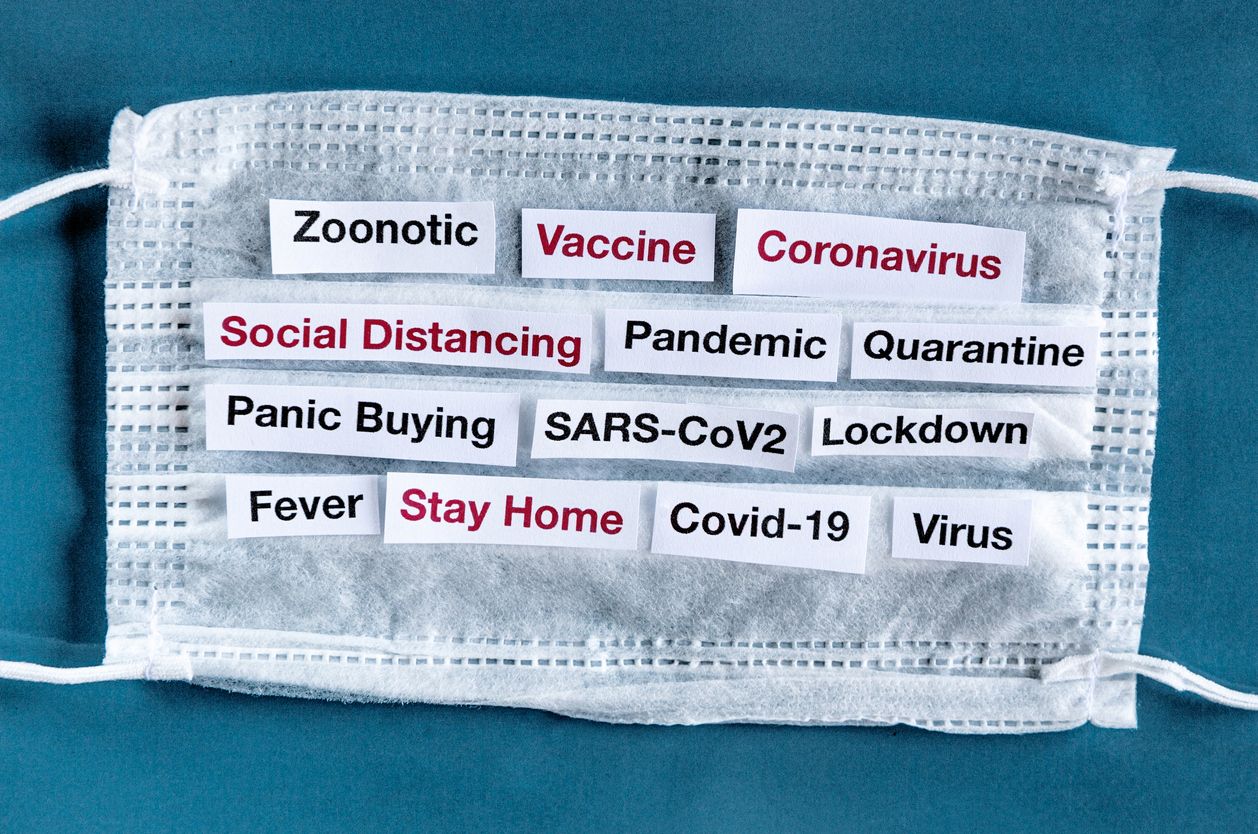New words are not a new thing.
With over a million recognised terms and around 15 new ones created every day (that’s about one every 98 minutes), the English language is an ever-evolving beast.
In terms of how many words are officially added to the dictionary each year, well, that depends on the lexicon in question. At Merriam-Webster, for instance, formal additions normally “occur in large batches a few times each year as our staff completes the various tasks required for each new entry or revision”. Some words, gradually growing in usage over the years, are scheduled for a future induction date, while others experience more rapid acceptance into common dialect and are subsequently added at relatively short notice.
But these are not normal times.
As the Oxford Dictionary – which generally publishes around 1,100 new words annually via four quarterly updates – stated when they released their second unplanned batch of new ‘coronacoinages’ and updated definitions in July:
“As a historical dictionary the OED has an obligation to tell the whole story of a word, but our constant monitoring of language also allows us to see (and tell) those stories as they emerge and change.
The impact of COVID-19 on our lives and our language is an ongoing story. As we learn more about the nature of the virus and the social impact of the pandemic, the associated vocabulary changes, and the terms themselves change in meaning and usage.
Because of the extraordinary circumstances of the pandemic, and the unusual pace of linguistic change, we have accelerated the process of researching, writing, and publishing these entries.”
Alongside updated medical and social terms, other slang terms have evolved – from repurposed terms such as ‘circuit-breaker’ to simple compounds and portmanteaus such as ‘covidiots’ and ‘infodemic’, keeping up with ‘coronaspeak’ is a battle in and of itself. In typical Aussie fashion, on the local front we’ve taken it one step further; turning our own phrases to navigate the ‘pando’ that is COVID-19. Our affinity for a snappy moniker has seen isolation become ‘iso’, hand-sanitiser turn into ‘sanny’ and panic-buyers labelled ‘magpies’.
But while acknowledging the existence of new terms is one thing, understanding them – and how to effectively and ethically use them in business messaging – is another.
Luckily, we’re here to help, so below we’ve added a quick cheat-sheet of some of the latest additions to 2020’s viral vernacular:
- Asymptomatic: Having no symptoms or presentations of a disease, despite being infected and contagious.
- Comorbidity: The coexistence of two or more diseases, disorders, or pathological processes in one individual, especially as a complicating factor affecting the potential survival rate of the individual.
- Contact tracing: The action of identifying individuals who have been in the proximity of a person diagnosed with an infectious disease, in order to limit further community spread.
- Covidiot: An individual who spurns medical, scientific and expert advice and chooses to disobey social distancing etiquette and/or official health guidelines.
- Flatten the curve: To take measures designed to reduce the rate at which infection spreads during an epidemic, with the aim of lowering the peak daily number of new cases and extending the period over which new cases occur.
- Frontliner: A person positioned on the foremost line, row, or part of something; specifically a soldier fighting on the front line, or emergency services personnel dealing directly with COVID-19 patients.
- Infodemic: A proliferation of diverse, often unsubstantiated information relating to a crisis, controversy, or event, which disseminates rapidly and uncontrollably through news, online, and social media, and is regarded as intensifying public speculation or anxiety.
- Novel Coronavirus: ‘Novel’ means new (as this is a newly-discovered strain of the coronavirus). ‘Coronavirus’ is a name given to a family of viruses that cause respiratory illness. One of the key characteristics of a coronavirus is a protein on their surface that resembles a crown, hence the name ‘corona’.
- Pandemic vs. Epidemic: While the lines between each can become blurred, in general, an epidemic refers to the rapid spread of a disease within a large community, while a pandemic refers more to a global/international spread of disease.
- PPE: Personal protective (or protection) equipment: clothing and equipment designed to provide the wearer or user protection against hazardous substances or environments, or to prevent the transmission of infectious diseases.
- Self-isolate/self-quarantine: To isolate oneself from others deliberately; (now) especially to undertake self-imposed isolation for a period of time in order to avoid catching or transmitting infectious disease, or as one of a number of public health measures designed to inhibit its spread.
- Social distancing: The action of maintaining a specified physical distance from other people, or of limiting access to and contact between people in order to avoid catching or transmitting infectious disease, or as one of a number of public health measures designed to inhibit its spread.
- Social recession: A period of widespread deterioration in the quality of life among members of a community, especially due to reduced interactions and weakened social bonds
- Quarantini (see also ‘quarantinnie’) : An alcoholic beverage consumed in isolation, often at ‘Locktail Hour’.
- Zoonotic: A disease that already exists in animals but can also infect humans. Other examples include rabies, anthrax and Ebola.
Having fun with words has benefits, it’s part of what we do to enhance client campaign results when we do our audits.




